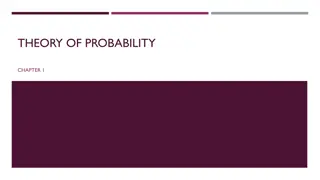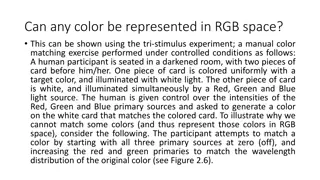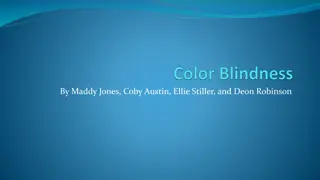Understanding the Basics of Color Theory
A color wheel organizes colors into primary, secondary, and tertiary categories. Primary colors are red, blue, and yellow; secondary colors are green, violet, and orange; and tertiary colors are mixtures of primary and secondary colors. The value of a color refers to how light or dark it is, with tints created by adding white and shades by adding black. Complementary colors are opposites on the wheel and can be used to achieve richer hues. Monochrome, analogous, complementary, split complement, triad, and double-split complement schemes are different ways to combine colors effectively. Warm colors include red, orange, and yellow, while cool colors are blue, green, and violet.
Download Presentation

Please find below an Image/Link to download the presentation.
The content on the website is provided AS IS for your information and personal use only. It may not be sold, licensed, or shared on other websites without obtaining consent from the author. Download presentation by click this link. If you encounter any issues during the download, it is possible that the publisher has removed the file from their server.
E N D
Presentation Transcript
A A Colour Colour Wheel shows how Wheel shows how colours are organized or arranged. are organized or arranged. colours There are three primary colours: red, blue and yellow. The primary colours cannot be achieved by mixing other colours. There are three secondary colours: green, violet and orange. We mix red and blue to get violet; blue and yellow to get green and red and yellow to get orange. The tertiary colours are formed by mixing one primary and one secondary colour. 3
The tertiary The tertiary colours and blue and blue- -violet. violet. colours are red are red- -orange, red orange, red- -violet, yellow violet, yellow- -green, yellow green, yellow- -orange, blue orange, blue- -green green 4
Value is how light or dark Value is how light or dark a a colour colour can be. A light can be. A light value is when we add value is when we add white to a white to a colour colour and this is called a tint. is called a tint. and this A dark value is when we A dark value is when we add black to a add black to a colour this is called a shade. this is called a shade. colour and and ADD A FOOTER 5
Complementary Complementary colours colours colours that are opposite each that are opposite each other on the other on the colour colour wheel. Some artists prefer to use the Some artists prefer to use the complementary complementary colour achieve a darker achieve a darker colour adding black. It tends to give a adding black. It tends to give a much richer much richer colour colour. . colours are are wheel. colour to colour than to than The complementary The complementary colours red/green, blue/orange and red/green, blue/orange and yellow/violet. yellow/violet. colours are are ADD A FOOTER 6
A monochrome colour can be achieved by adding to that colour white, gray or black. For example, red, rose and pink. Adjacent colours also known as analogous colours are those side by side on the colour wheel. Complementary colours are those opposite each other on the colour wheel. A single split complement uses a primary colour plus the two colours on either side of its complement. For example, green, red-violet and red-orange. A triad as the name suggests is three colours equally spaced on the colour wheel. A double-split complement used two pairs of complementary colours. For example, red, green, blue and orange. 8
Warm colours are red, orange, and yellow. The cool colours are blue, green and violet. ADD A FOOTER 9























